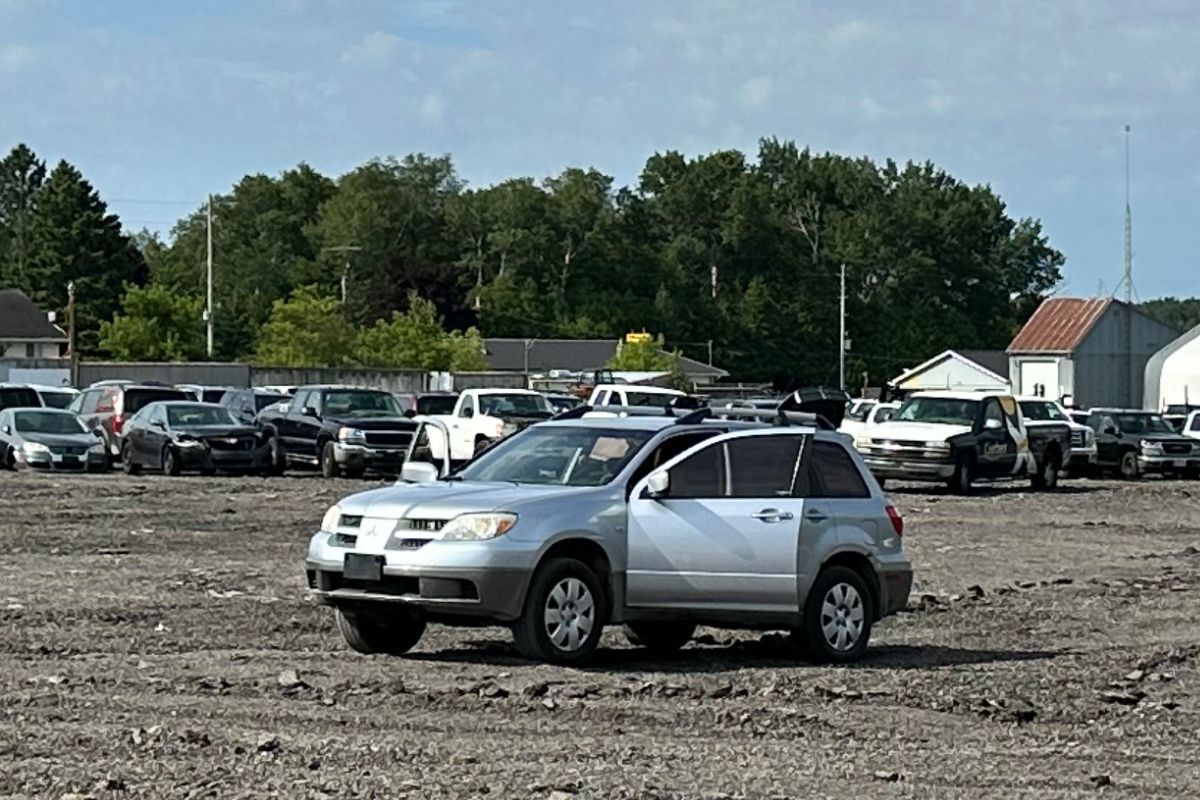Introduction
Winter driving presents its own challenges, especially in Ontario, where heavy snowfall and icy roads are a part of everyday life. As Ontario’s winter sets in with freezing temperatures and snowstorms, many drivers overlook the importance of having a well-stocked winter car emergency kit. Whether you break down in a snowstorm or slide into a ditch, being prepared can make the difference between a mild inconvenience and rapid deterioration into an emergency. A fully stocked kit isn’t just a safety precaution — it’s an absolute must.
A well-stocked winter emergency car kit can prevent hours of being stranded and help you handle minor roadside issues calmly. This blog will discuss essential items to keep in your car for cold-weather driving, as well as why they’re important in emergencies and how they may keep you safe.
Why is a Winter Car Emergency Kit Essential in Ontario?
Ontario has brutally cold winters. Some things can happen when you are driving, such as slippery road conditions, visibility dropping in seconds, and vehicles breaking down suddenly. In dangerously cold weather, a delay of any time can result in potentially serious circumstances like frostbite or hypothermia. For that reason, it’s essential to keep a dedicated winter emergency kit in your car during Ontario’s harsh winter months.
Furthermore, when getting into any kind of accident or a roadside emergency, having the right tools/supplies in your vehicle can help significantly. If you are stuck, your kit can ensure that you’re warm, safe, and visible while you are waiting for assistance. Some people may think of an emergency kit as just a necessity for long road trips; however, even a quick 10-minute errand could start to have problems on the road under bad weather conditions. Ultimately, if you need to drive somewhere at all, it is always a good recommendation to have a winter car emergency kit in your trunk.
Essential Items for Your Winter Car Emergency Kit
- Warm Blankets or Sleeping Bag
In Ontario, winter nights can see temperatures drop below -20°C. In case your car breaks down and the heater is not working, having a warm blanket or compact sleeping bag will keep you warm until others can arrive. Wool blankets are the best option because they insulate even when wet.
- Jumper Cables
The cold can drain your car battery very quickly. Jumper cables allow you to restart your car with assistance from another vehicle. It’s best to keep a good-quality, heavy-duty set with long cables so that you can connect even if the other car cannot park right next to yours.
- Flashlight and Extra Batteries
The days are short in the winter, and the nights are long. If your vehicle breaks down after dark, a flashlight will help you check under the hood or flag down assistance. LED flashlights are best as they last longer. Always keep extra batteries in your kit.
- First Aid Kit
You should always keep a basic first aid kit in your vehicle — and it’s even more crucial during the winter months. Bandages, antiseptic wipes, adhesive tape, scissors, pain relief, and any other medications you may personally need should all be included.
- Ice Scraper and Snow Brush
Snow-covered windshields and frozen windows are not uncommon in Ontario. An ice scraper and snow brush allow you to clear your car before you drive away so you can see properly! Keeping your car’s windows clean is not only safe, but it’s also legally required in Ontario.
Also Read: Why Winter is the Best Time to Scrap Your Old Car
- Windshield Washer Fluid (Winter Formula)
Use a winter-grade windshield washer fluid that won’t freeze in sub-zero temperatures. Always keep an extra bottle in your trunk because running out of washer fluid while you’re driving (in slushy or snowy conditions) can severely reduce visibility and put you at risk.
- Portable Charger (Power Bank)
When you’re stranded, your phone is your lifeline. But when it’s cold, it is draining batteries fast. So, a fully charged power bank should always be part of your survival equipment so you can call for help when you need to.
- Non-Perishable Snacks
If you’re stuck for hours, snacks like energy bars, nuts, or dried fruit can help maintain your energy, and you can keep your energy level up. Stick with items that have a long shelf life and won’t spoil when the temperature is cold.
- Water Bottles
Staying hydrated is important all year round — even in the winter. If you can, put a couple of water bottles in your kit. To prevent freezing, keep them in insulated covers and inside your car, not in the trunk.
- Shovel
If your car ever gets stuck in snow, a small and collapsible shovel can be useful. You can shovel snow out from around the tires or to help create a path for better traction. Choose one that is made from sturdy material that is intended for removing snow.
- Sand, Cat Litter, or Traction Mats
One simple trick many Ontario drivers know: if your tires lose grip on snow or ice, place sand, non-clumping cat litter, or traction mats under them to regain traction.
- Road Flares or Reflective Warning Triangles
In a snowstorm with limited visibility, drivers are not able to see you. Road flares or reflective triangles will alert other drivers (and emergency services) to your location. This will help to avoid further accidents while you are waiting for assistance.
- Gloves, Hat, and Thermal Socks
We recommend keeping an extra pair of gloves, a warm hat, and thermal socks in your kit. If you are forced to leave the vehicle to make a repair or dig it out of the snow, the gloves will protect your hands from frostbite, the hat will protect your head, and the warm socks will protect your feet.
- Tow Strap
If there’s another vehicle and you’re stuck in a snowbank, a strong tow strap can save the day. This can be especially helpful in rural areas or cottage country, where tow trucks may take longer to arrive.
Additional Suggestions for Winter Driving Safety
-
- Be sure to check your emergency kit every season. You should remove expired food, any batteries that are dead, and anything that is broken.
- Let someone know where you are going and when you will arrive, especially if you are going on a longer trip.
- Keep your gas tank at least half full, which will help you prevent your fuel lines from freezing up.
- Drive slowly and keep extra distance between vehicles while driving in winter conditions.
- Ensure your car is properly maintained before winter begins — check your tires, battery, brakes, and wipers before heavy snow arrives.
Also Read: How to Prepare Your Car for Winter: 10 Essential Checks for Safe Driving
What to Do If Your Car Breaks Down During the Winter?
If you are stranded:
-
- Stay inside your vehicle unless you can verify that it is unsafe.
- Call the tow company or emergency services.
- Use road flares or reflective items to make yourself visible.
- Every hour, start your engine for 10 minutes to run the heater.
- Keep the exhaust cleared of snow.
- Bundle up under blankets with food or water until help arrives.
Conclusion
Ontario winters are no joke. Whether you commute daily or drive occasionally, carrying a winter car emergency kit is one of the simplest ways to stay safe on the road. And if your car has reached the point where it’s no longer roadworthy, Greenway Auto Recycling is here to help.
We have been serving the GTA for over 20 years and offer professional scrap car removal services. Not only do we offer fair cash deals, but we also assist with removing your license plates and guide you through the proper steps for taking your vehicle off the road.
FAQs About Winter Car Emergency Kits in Ontario
1. What should I keep in my winter car emergency kit in Ontario?
Your kit should include essentials such as warm blankets, jumper cables, a flashlight with extra batteries, first aid supplies, an ice scraper, non-perishable snacks, water, and a shovel. You should also pack sand or cat litter for traction and a fully charged power bank for emergencies.
2. How often should I check or replace items in my winter emergency kit?
Inspect your kit at the start of every winter season. Replace expired food, dead batteries, or any damaged tools. It’s also smart to refresh your kit after any major trip or if you’ve used some items during a breakdown.
3. Do I need a winter emergency kit for short trips around town?
Yes — even short drives can turn risky in Ontario’s harsh winter weather. Sudden snow squalls or icy roads can leave you stranded. Having a winter car emergency kit ensures you stay warm, visible, and safe while waiting for help.
4. What’s the best way to store my winter emergency kit in the car?
Keep your kit in a waterproof container or heavy-duty bag in the trunk. Store smaller essentials like your flashlight, gloves, or phone charger within reach of the driver’s seat for quick access.
5. Can I scrap my car in winter in Ontario?
Absolutely. You can scrap your car anytime during the year — even in winter. In fact, it’s often the best time to do it, especially if your old vehicle struggles in cold weather. At Greenway Auto Recycling, we offer same-day scrap car removal across Ontario, free towing, and fair cash payouts even during harsh winter months.
Need help getting rid of your old or non-working car this winter? Contact Greenway Auto Recycling at (416) 783-9026 for quick and reliable scrap car removal in Ontario.





